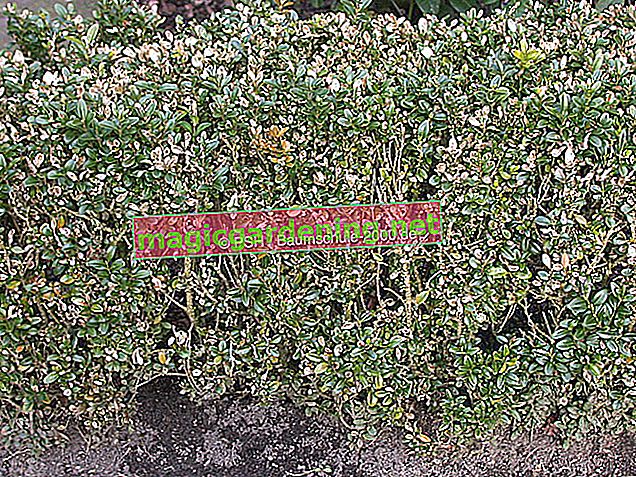
Boxwood leaf sucker
The boxwood leaf sucker, also known as the boxwood leaf flea, preferably sucks on the young leaves, but also on fresh shoots, which causes various deformations. Similar to the woolly lice and mealybugs, which also suckle leaf sap, the pests secrete protective wax threads. If the infestation is severe, the leaves and shoots are also covered by a sticky layer of honey, which in turn can be covered with the blackish sooty fungus. The adult leaf fleas lay their eggs on the boxwood in summer, from which the larvae then hatch. These finally overwinter in the larval stage directly on the plant.
also read
- Pest infestation on the hibiscus
- Boxwood infested with mites? Damage and countermeasures
- Is the rubber tree susceptible to pest infestation?
Damage
The leaves on the young shoots are spoon-like or vesicularly deformed. If you take a closer look at the affected shoots, white flakes of wax wool can be seen there. In these are the yellow-brown, aphids not dissimilar leaf suckers. If the infestation is severe, the leaves are coated with sticky, sweet honeydew.
Combat
If the infestation is severe, cut back the shoot tips of the boxwood in summer. Preparations based on neem or rapeseed oil, which you can use to spray the infected plants dripping wet, are also suitable for the hobby and home garden.
Mealybugs and mealybugs
White, cotton wool-like webs on leaves and shoots and sometimes also on the roots can also result from an infestation by woolly bugs and mealy bugs. The approximately three to seven millimeters long animals also feast on the nutrient-rich leaf sap and can cause severe damage.
Damage
The structures that are reminiscent of cotton wool are cocoons that the pests use to protect themselves from predators. An infestation shows you first by yellowing and drying leaves, which are often thrown off after a while. Shoots and leaves wither, and the growth of the plant is inhibited due to the lack of nutrients. The white pods with the animals are mainly located on the underside of the leaves and in the branches of the shoots and the leaf axils.
Combat
A vigorous hosing down with neem or rapeseed oil preparations will also help with these plant lice, whereby you should shade box trees treated in this way. The combination of a sunny location and an oil treatment can otherwise quickly lead to unsightly burned leaves. If, on the other hand, the infestation is already well advanced, only secateurs can help. Cut away affected shoots and leaves generously.
Tips
If, on the other hand, the white flakes can be seen in the course of spring sprouting and further damage to the box tree cannot be seen, then it is by no means a pest infestation. Instead, the light, protective wax layer is now peeling off the new shoot and leaf buds.








